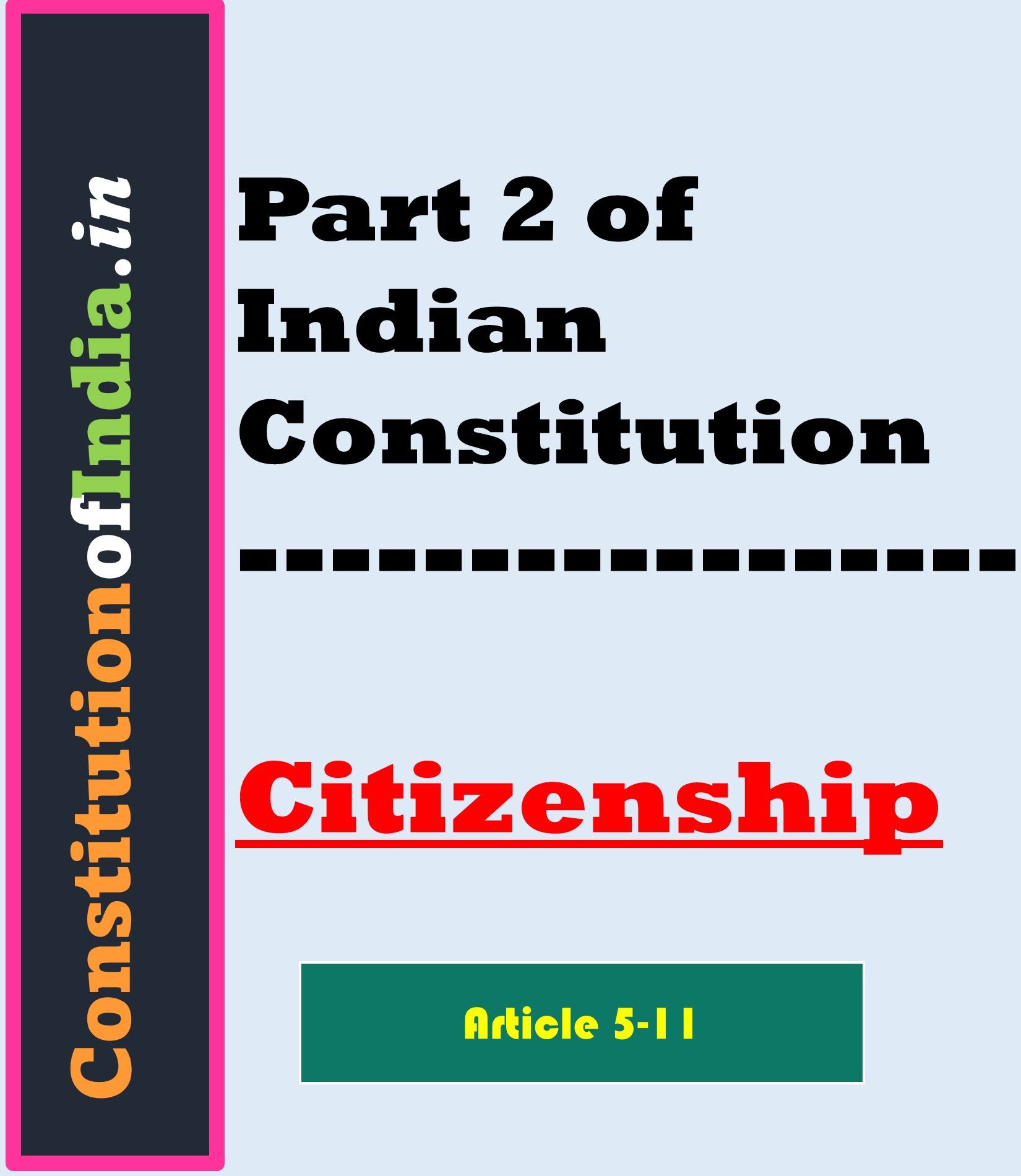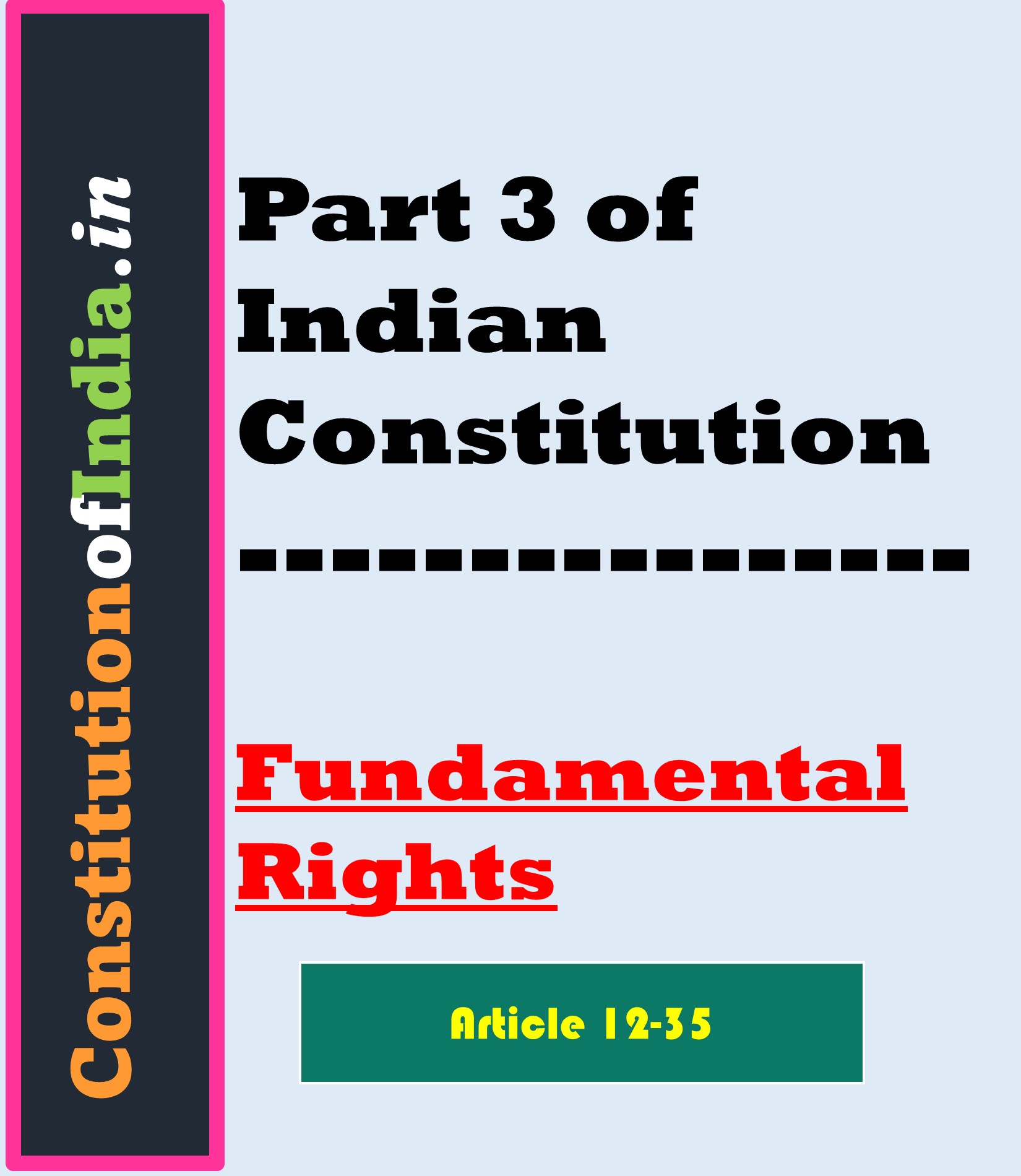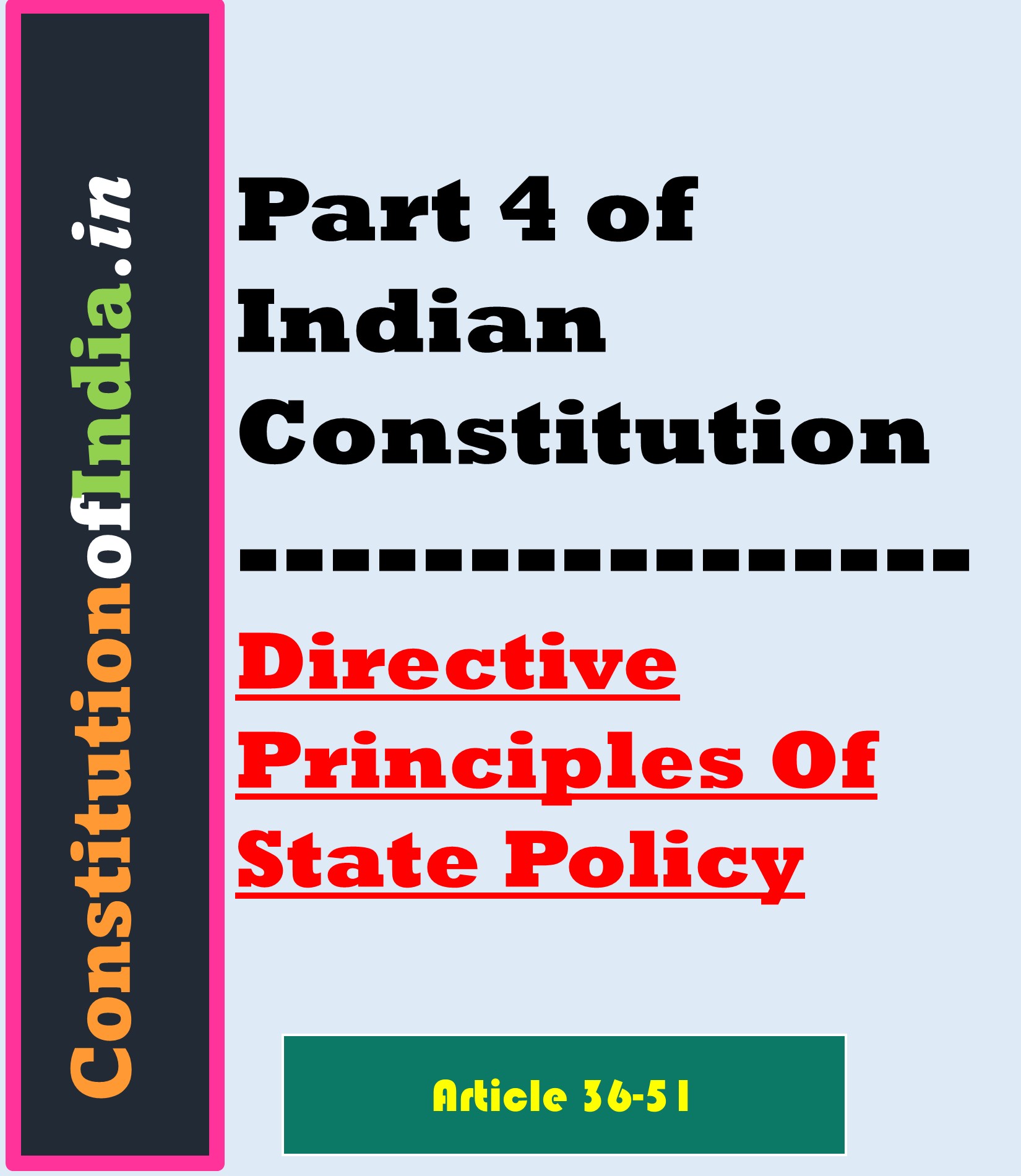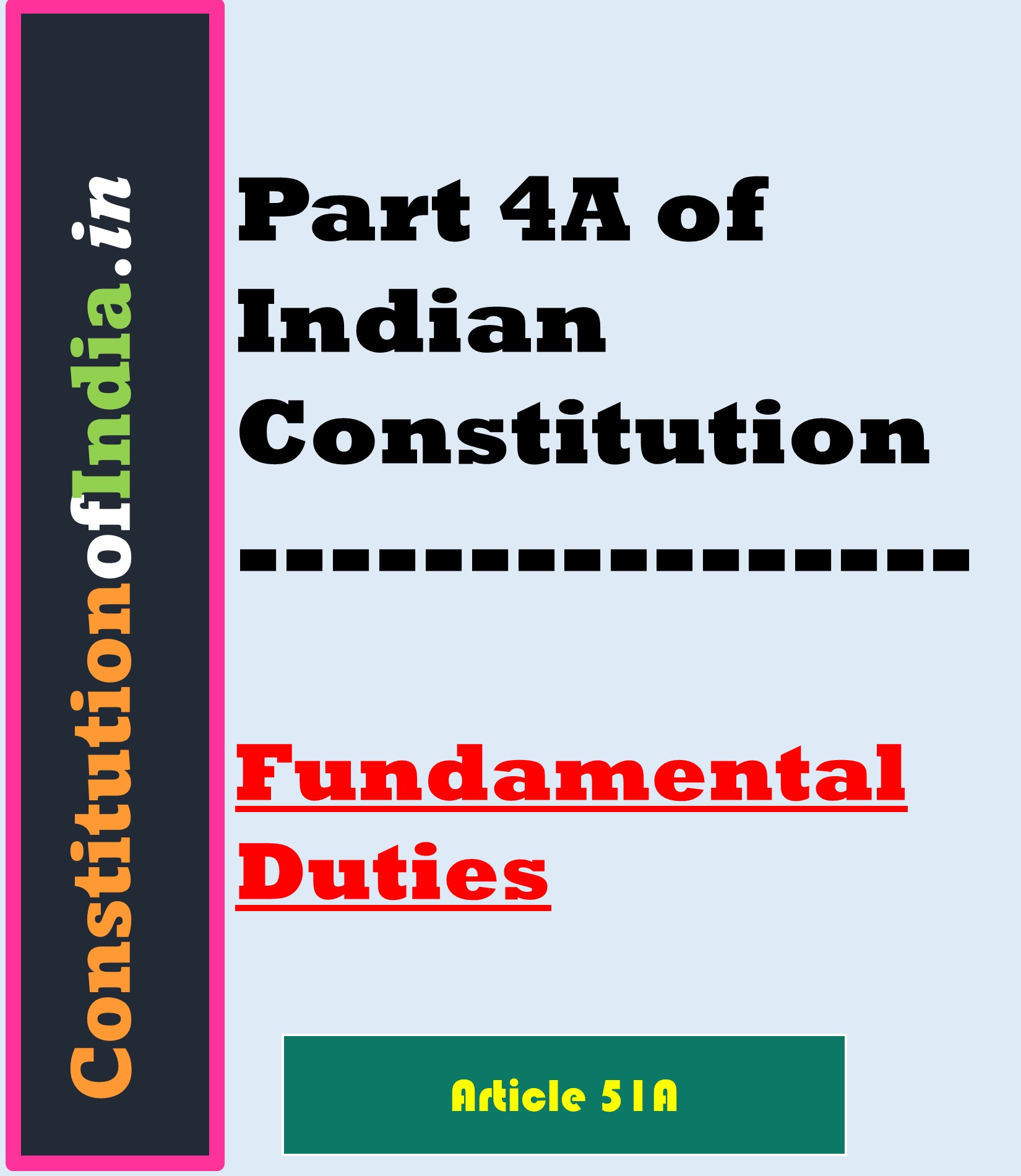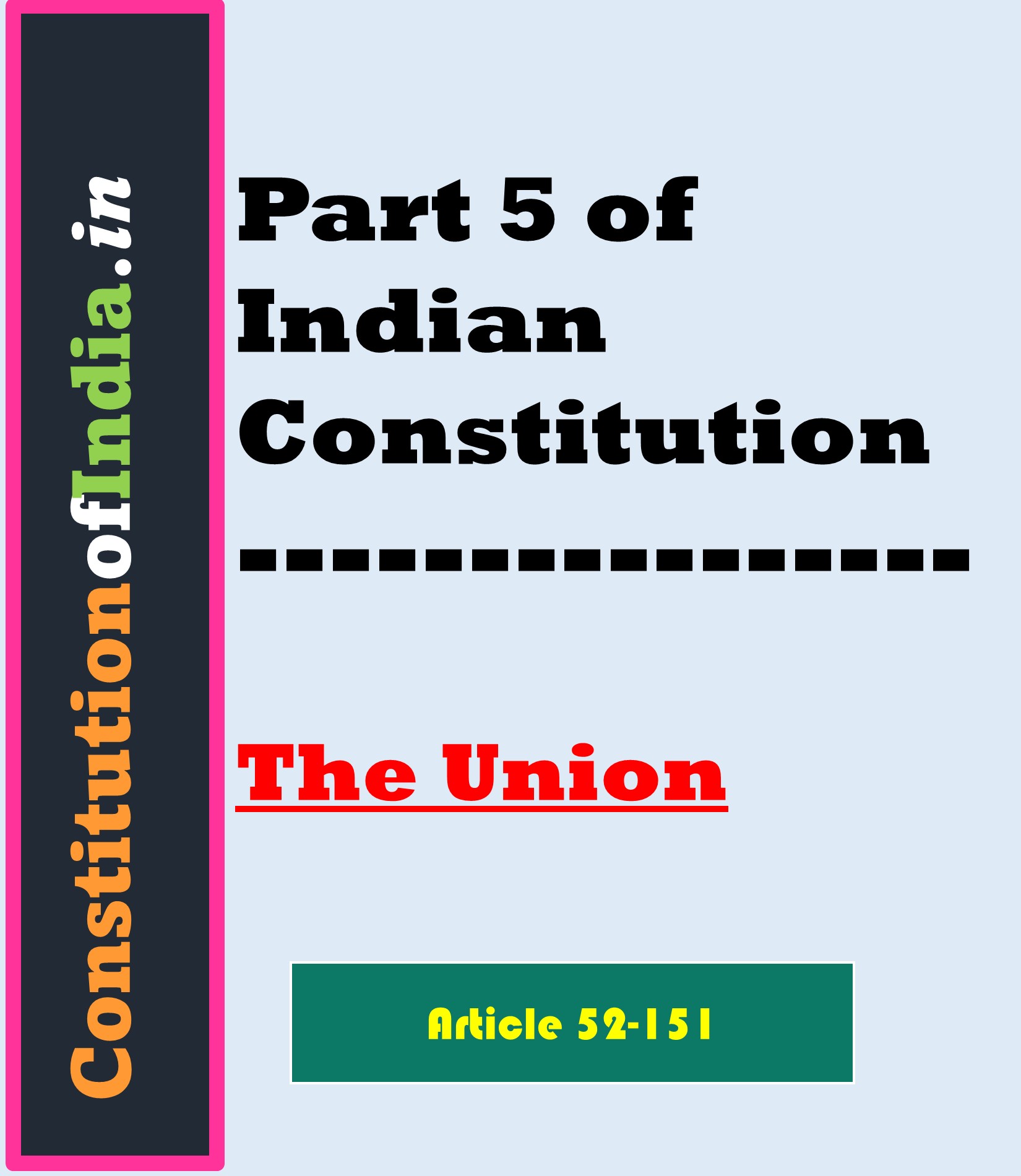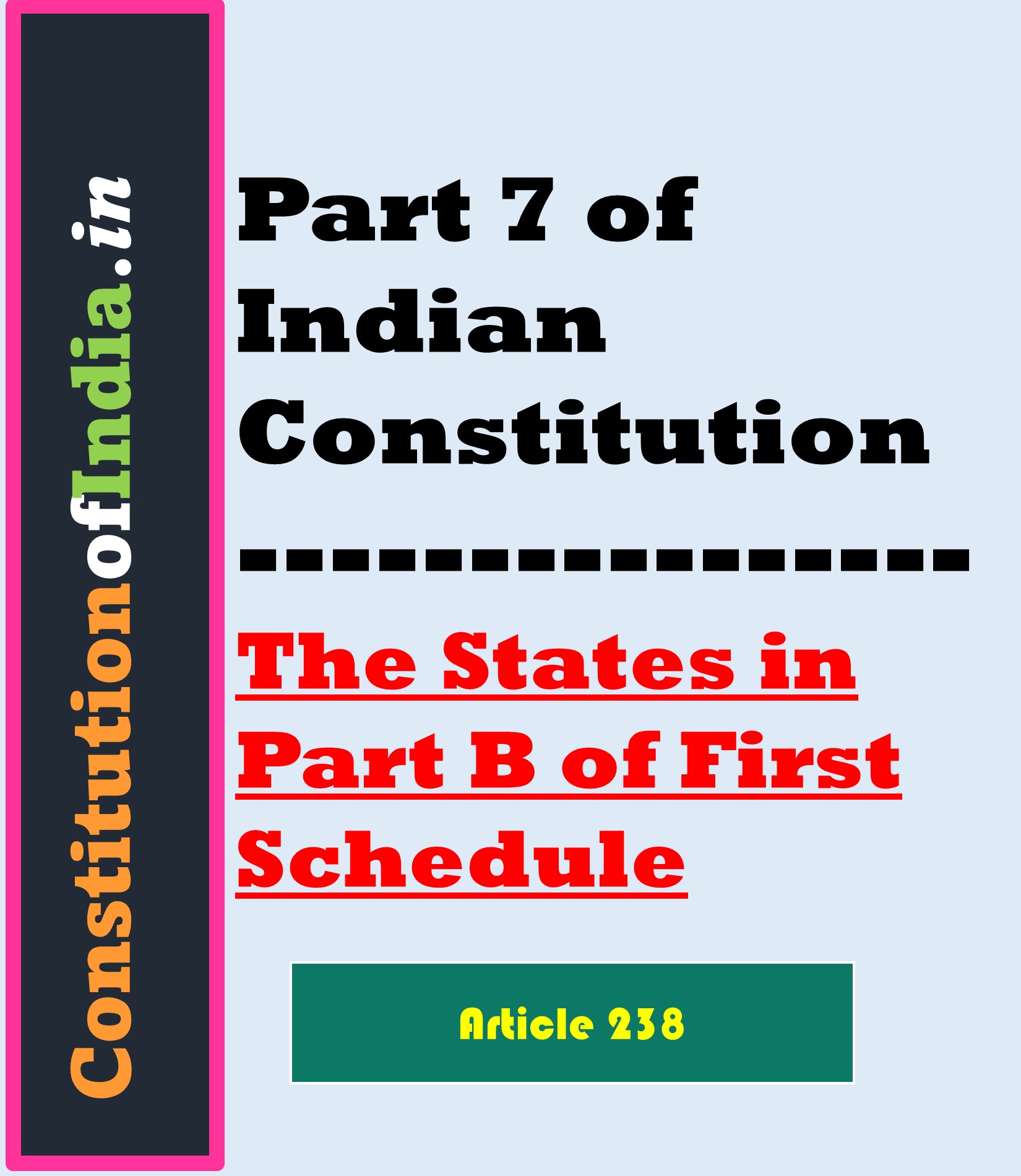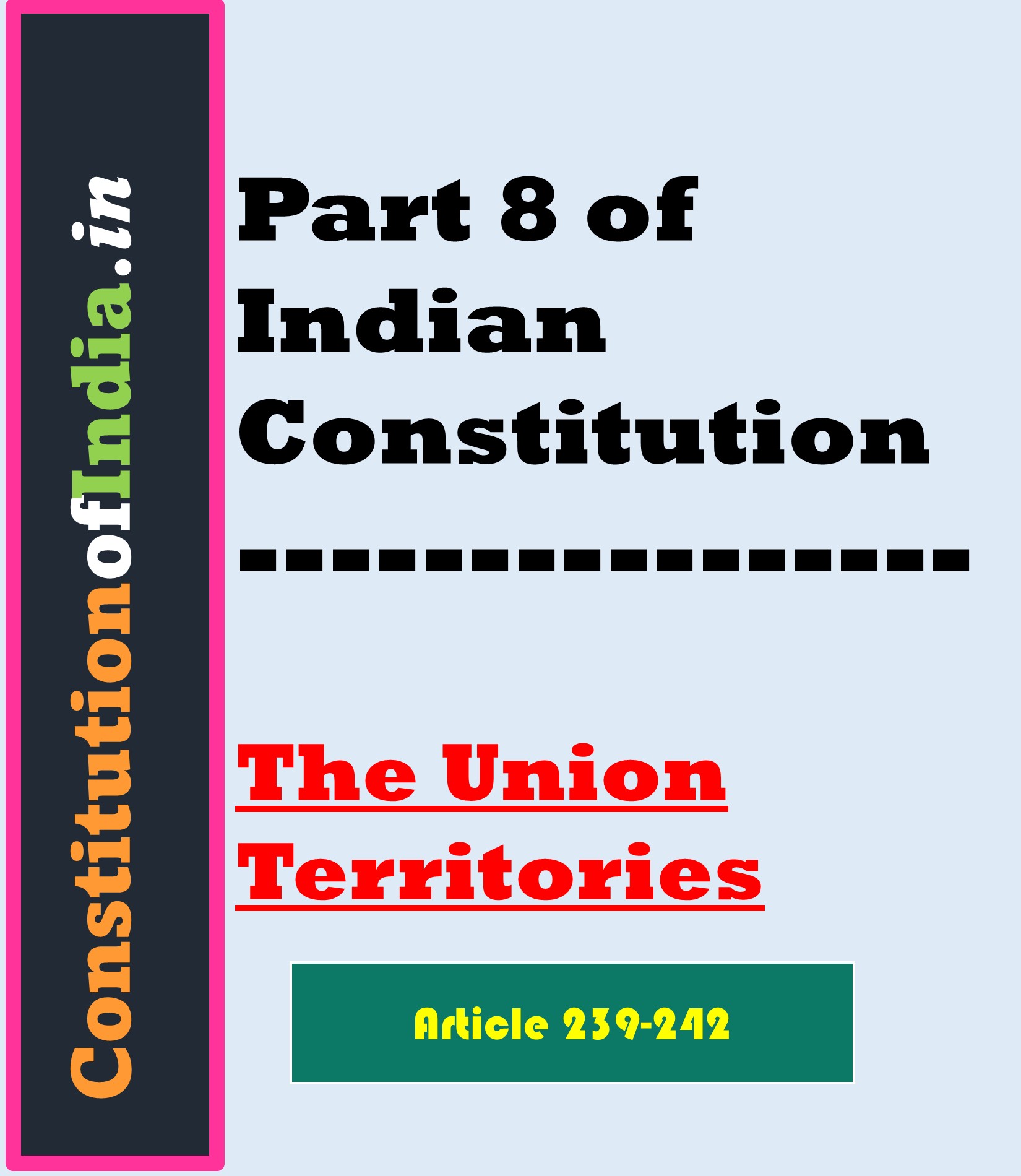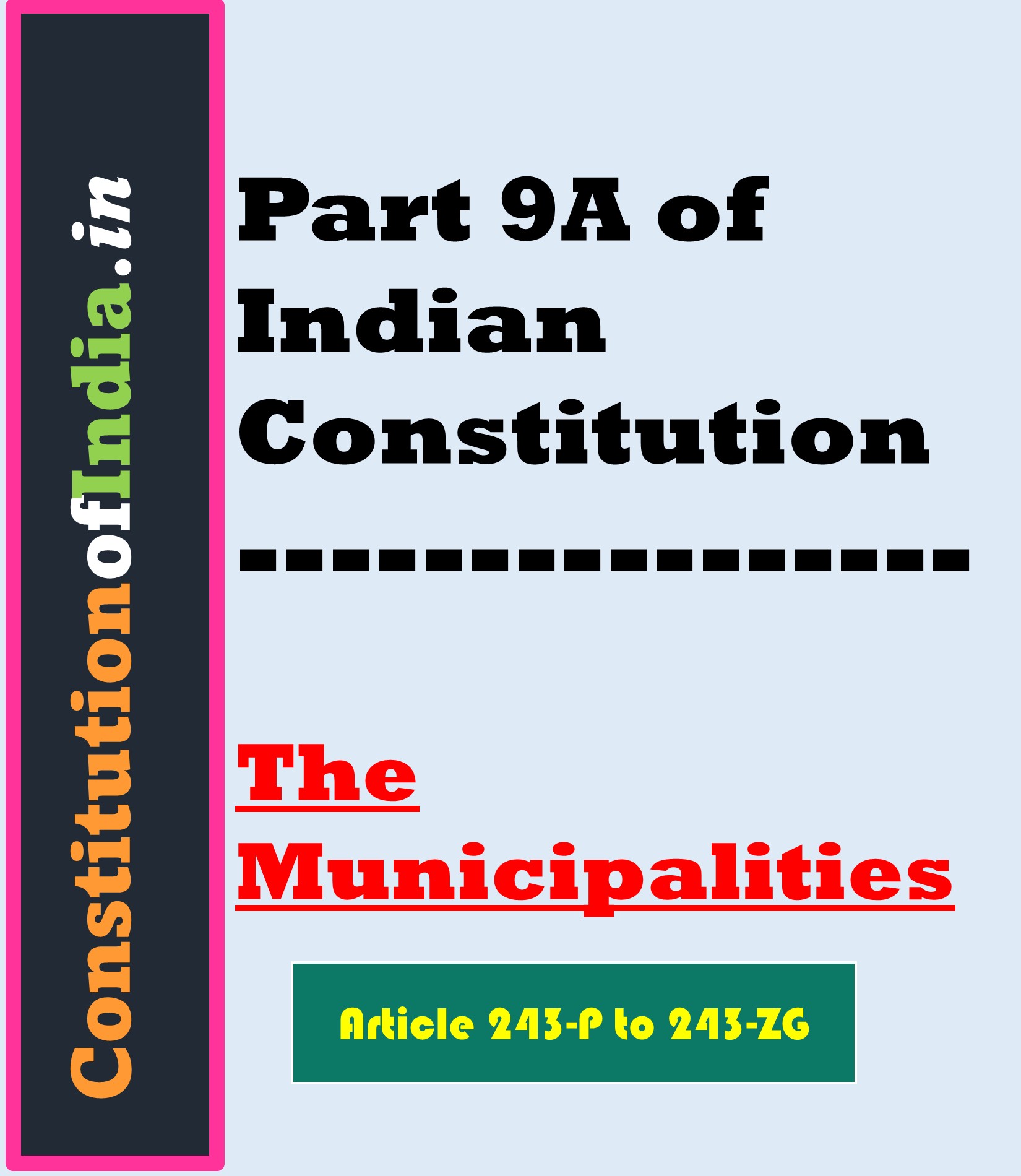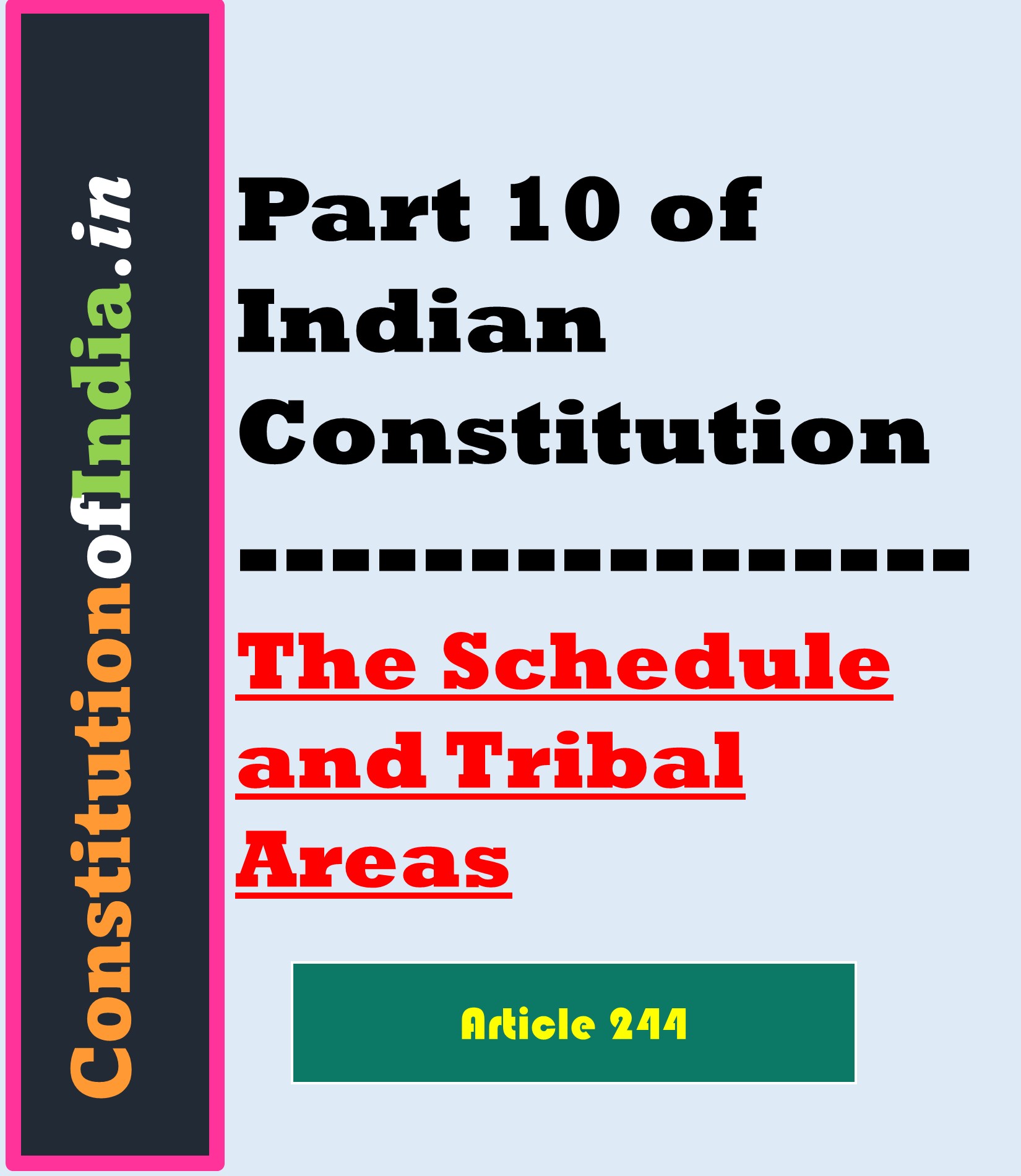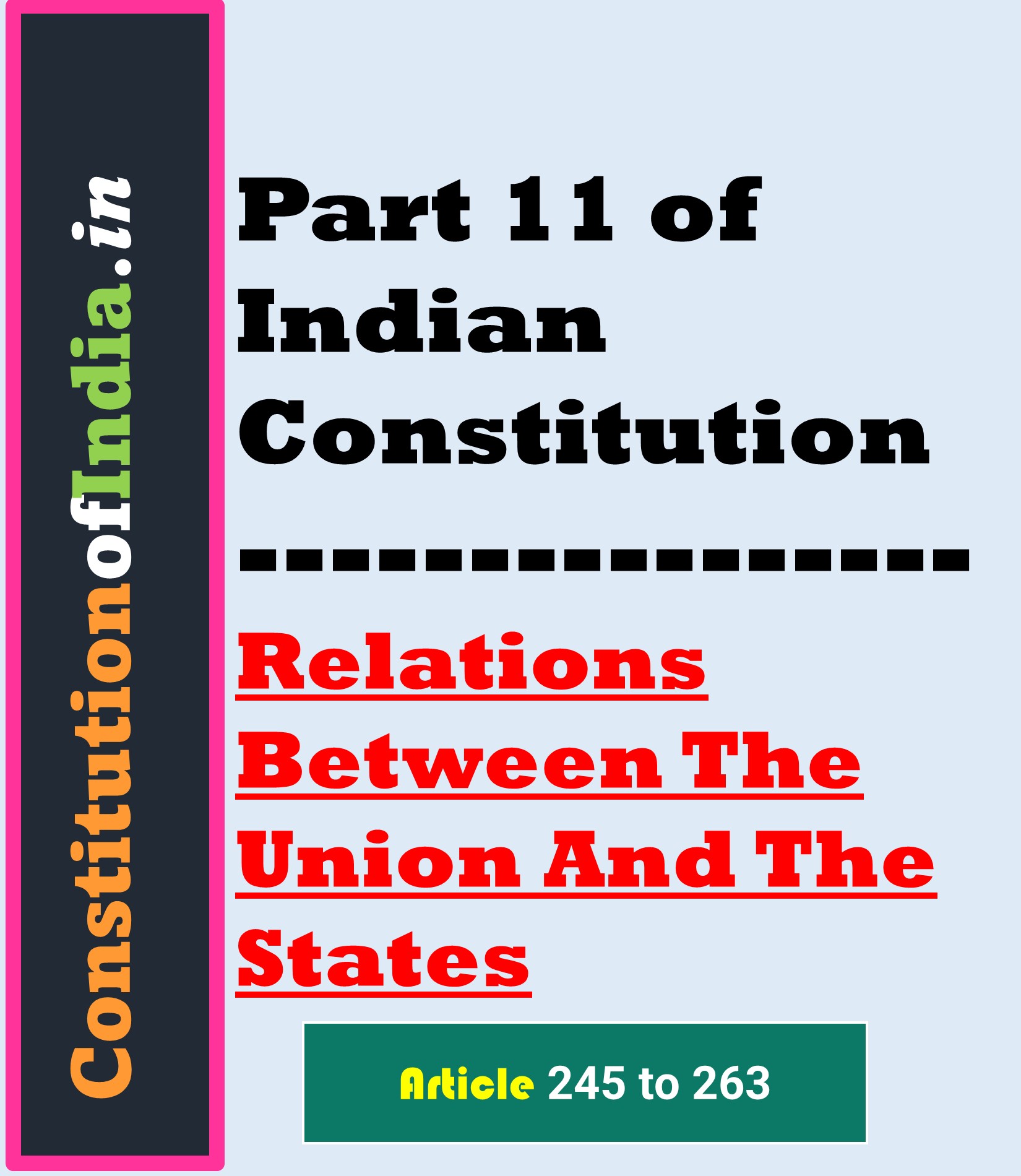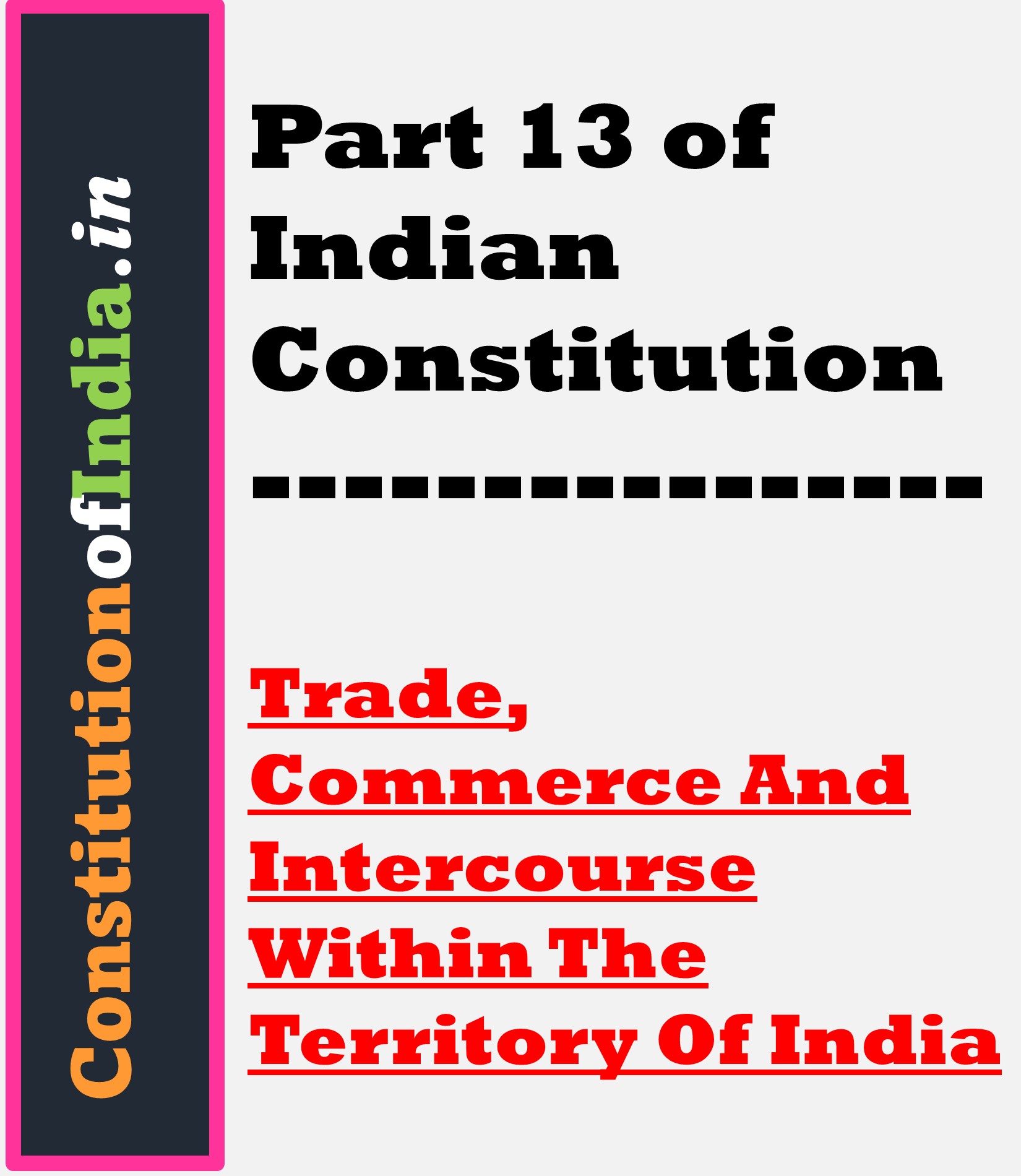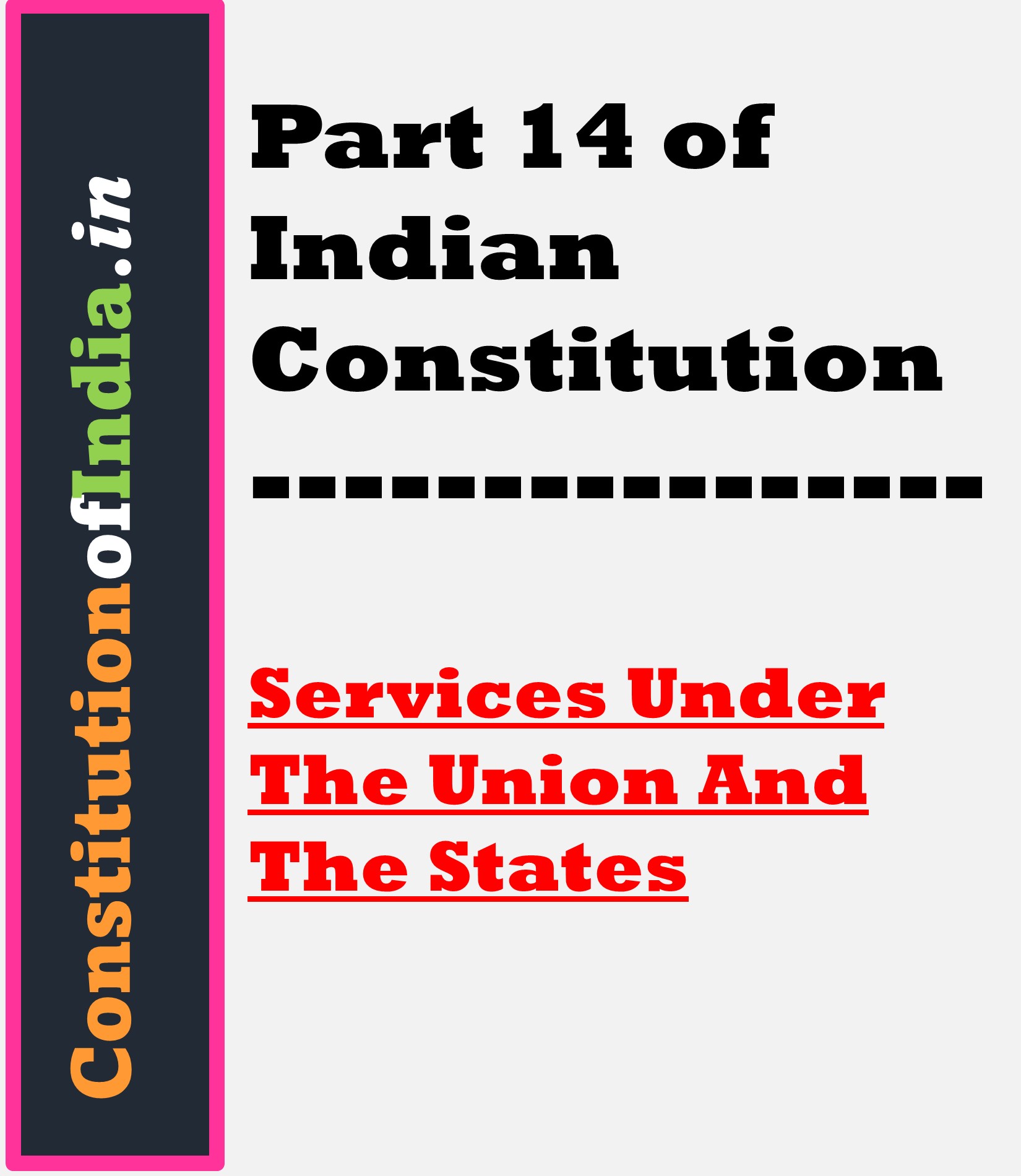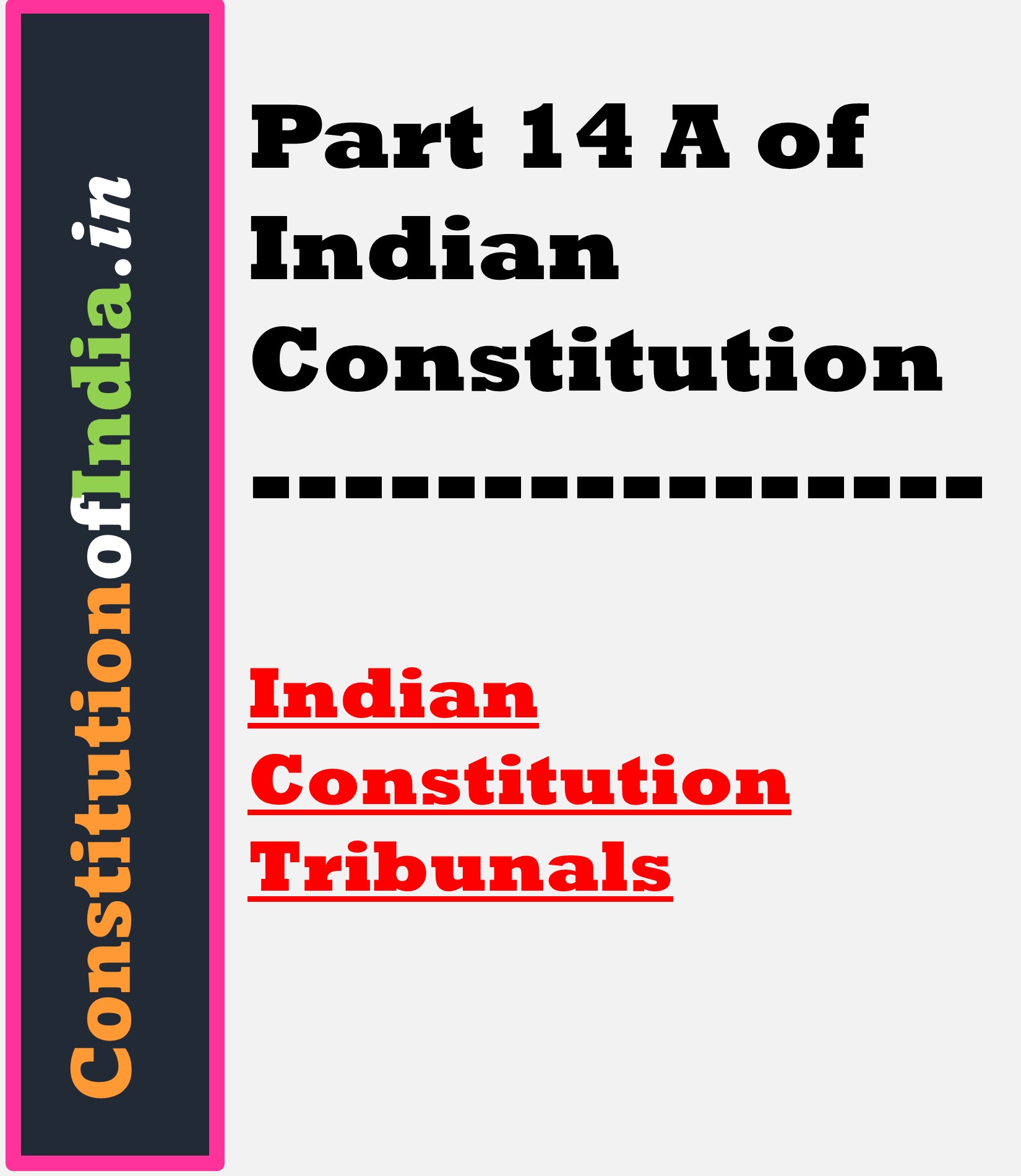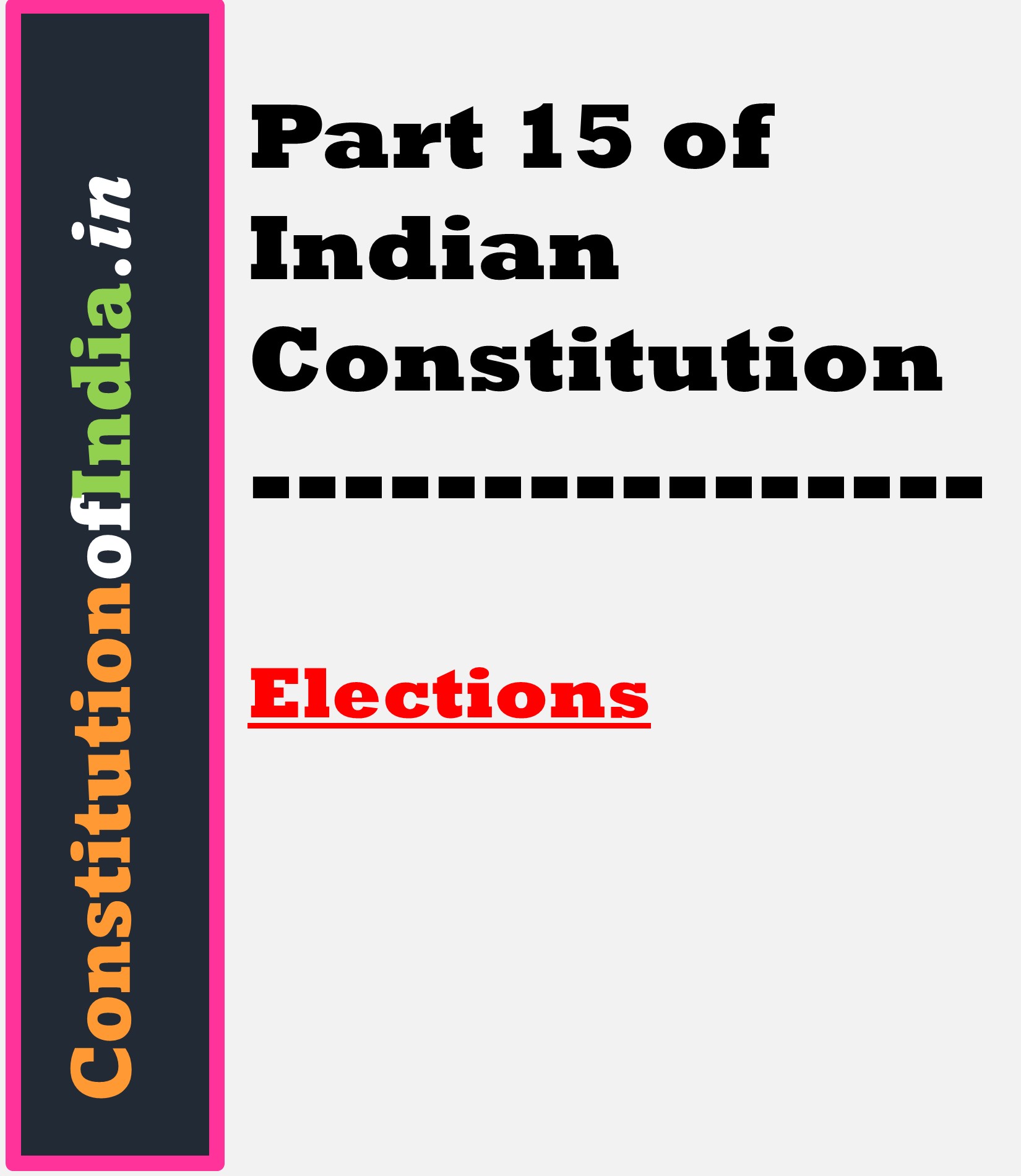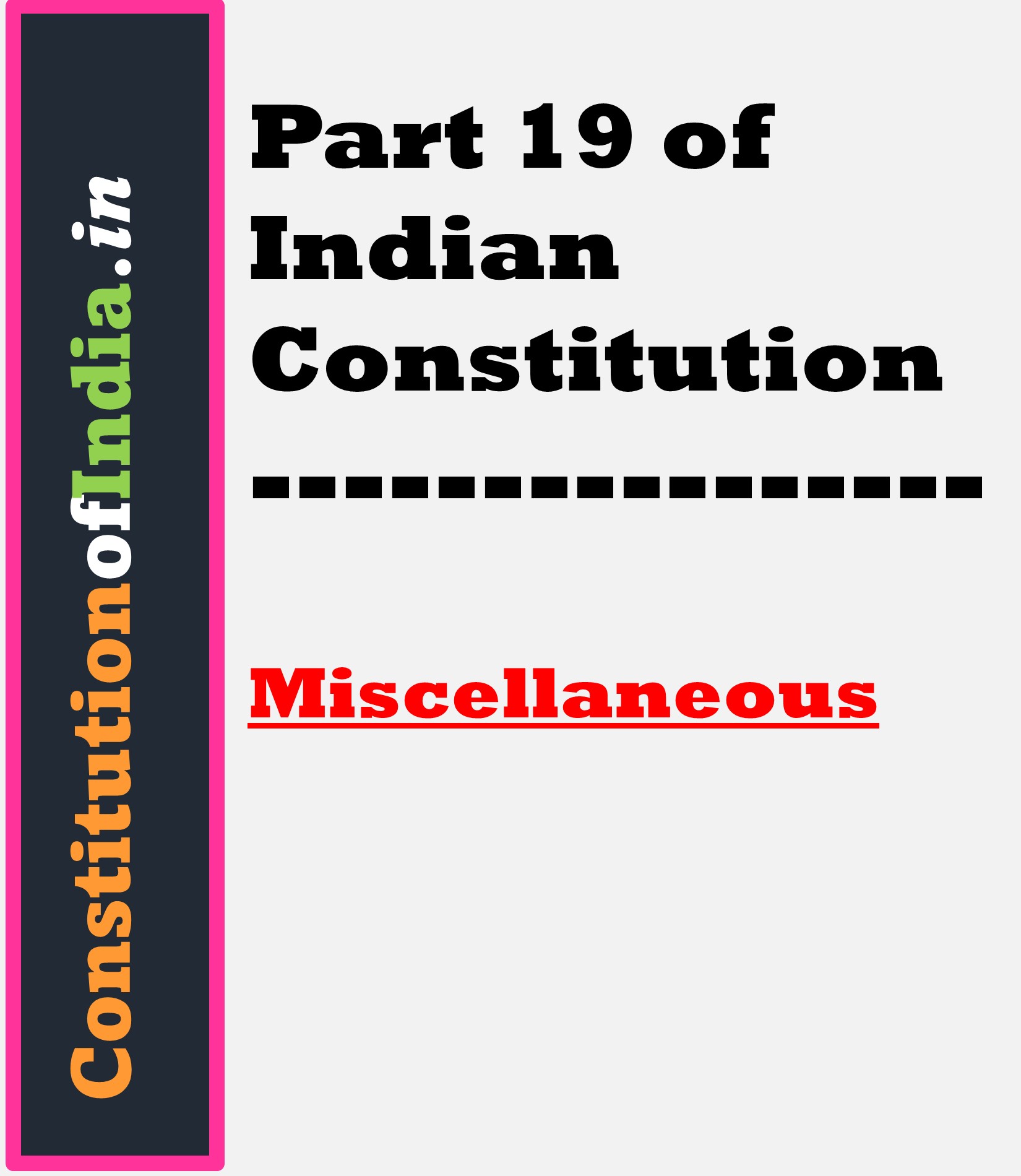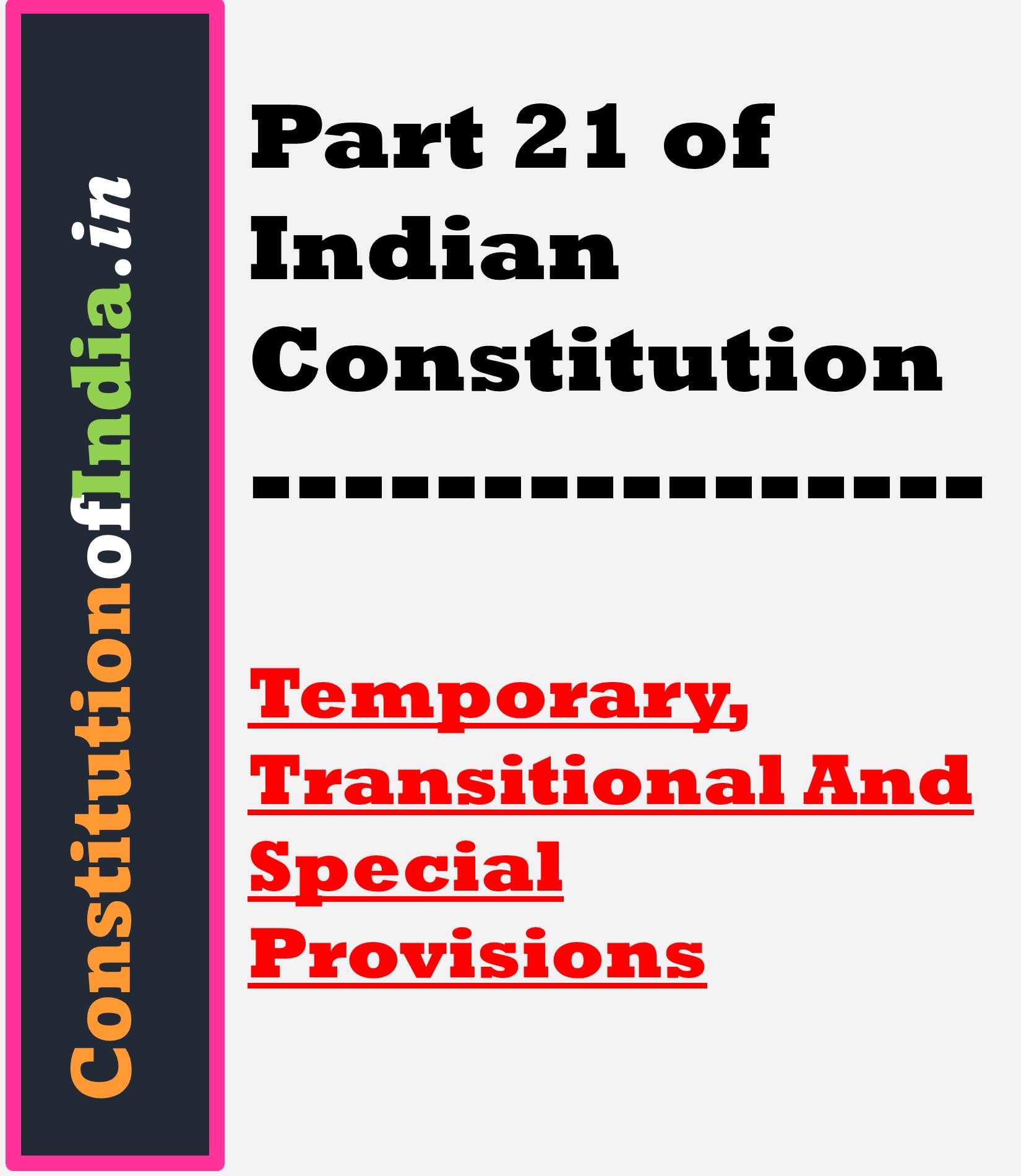The Constitution Of India Parts 1 to 22, Articles 1 to 395.
The Constitution of India is the supreme law of the country, providing the framework for its governance and functioning. It was adopted on 26th January 1950 and has undergone several amendments since then. Here’s a brief overview of the Constitution of India:
- Preamble: The Constitution begins with a preamble that outlines the basic ideals and objectives of the Indian state, including justice, liberty, equality, and fraternity.
- Parts: The Constitution is divided into 25 parts, which cover various aspects of governance, fundamental rights, directive principles, powers of the government, and more.
- Articles: The Constitution consists of 470 articles (as of my knowledge cutoff in September 2021), which are further divided into clauses and sub-clauses. These articles lay down the fundamental principles, rights, and duties of citizens, as well as the structure and functioning of the government.
- Fundamental Rights: Part III of the Constitution guarantees fundamental rights to all citizens, including the right to equality, freedom of speech and expression, right to life and personal liberty, and more. These rights are enforceable by the judiciary.
- Directive Principles of State Policy: Part IV of the Constitution contains the directive principles that provide guidelines for the government to promote social justice, welfare, and economic development. These principles are not legally enforceable but are considered fundamental to governance.
- Federal Structure: The Constitution establishes a federal system of government, where power is divided between the central government and the states. It defines the powers and responsibilities of the central and state governments and also provides for the existence of Union Territories.
- Parliament: The Constitution provides for a bicameral Parliament consisting of the President and two houses, namely the Rajya Sabha (Council of States) and the Lok Sabha (House of the People). Parliament is responsible for making laws and overseeing the functioning of the government.
- Judiciary: The Constitution establishes an independent judiciary with the Supreme Court as the highest judicial authority in the country. It safeguards the rights of individuals, interprets the law, and acts as the guardian of the Constitution.
- Amendment Procedure: The Constitution can be amended to meet the changing needs and aspirations of the country. Amendments can be made by a special majority of the Parliament, and some amendments require ratification by a specified number of states.
- Fundamental Duties: The Constitution also outlines certain fundamental duties for citizens, including respect for the Constitution, safeguarding public property, and promoting harmony and the spirit of common brotherhood.
Content
- Preamble
- PART I: THE UNION AND ITS TERRITORY
- 1. Name and territory of the Union
- 2. Admission or establishment of new States
- 2A. [Repealed]
- 3. Formation of new States and alteration of areas, boundaries or names of existing States
- 4. Laws made under articles 2 and 3 to provide for the amendment of the First and the Fourth Schedules and supplemental, incidental and consequential matters
- PART II: CITIZENSHIP
- 5. Citizenship at the commencement of the Constitution.
- 6. Rights of citizenship of certain persons who have migrated to India from Pakistan.
- 7. Rights of citizenship of certain migrants to Pakistan.
- 8. Rights of citizenship of certain persons of Indian origin residing outside India.
- 9. Persons voluntarily acquiring citizenship of a foreign State not to be citizens.
- 10. Continuance of the rights of citizenship.
- 11. Parliament to regulate the right of citizenship by law.
- PART III: FUNDAMENTAL RIGHTS
- General
- Right to Equality
- Right to Freedom
- Right against Exploitation
- Right to Freedom of Religion
- 25. Freedom of conscience and free profession, practice and propagation of religion.
- 26. Freedom to manage religious affairs.
- 27. Freedom as to payment of taxes for promotion of any particular religion.
- 28. Freedom as to attendance at religious instruction or religious worship in certain educational institutions.
- Cultural and Educational Rights
- Saving of Certain Laws
- Right to Constitutional Remedies
- 32. Remedies for enforcement of rights conferred by this Part.
- 32A. [Repealed.]
- 33. Power of Parliament to modify the rights conferred by this Part in their application to Forces, etc.
- 34. Restriction on rights conferred by this Part while martial law is in force in any area.
- 35. Legislation to give effect to the provisions of this Part.
- PART IV: DIRECTIVE PRINCIPLES OF STATE POLICY
- 36. Definition.
- 37. Application of the principles contained in this Part.
- 38. State to secure a social order for the promotion of welfare of the people.
- 39. Certain principles of policy to be followed by the State.
- 39A. Equal justice and free legal aid.
- 40. Organisation of village panchayats.
- 41. Right to work, to education and to public assistance in certain cases.
- 42. Provision for just and humane conditions of work and maternity relief.
- 43. Living wage, etc., for workers.
- 43A. Participation of workers in management of industries.
- 44. Uniform civil code for the citizens.
- 45. Provision for early childhood care and education to children below the age of six years.
- 46. Promotion of educational and economic interests of Scheduled Castes, Scheduled Tribes and other weaker sections.
- 47. Duty of the State to raise the level of nutrition and the standard of living and to improve public health.
- 48. Organisation of agriculture and animal husbandry.
- 48A. Protection and improvement of environment and safeguarding of forests and wild life.
- 49. Protection of monuments and places and objects of national importance.
- 50. Separation of judiciary from executive.
- 51. Promotion of international peace and security.
- PART IVA: FUNDAMENTAL DUTIES
- PART V: THE UNION
- CHAPTER I. – THE EXECUTIVE
- The President and Vice-President
- 52. The President of India.
- 53. Executive power of the Union.
- 54. Election of President.
- 55. Manner of election of President.
- 56. Term of office of President.
- 57. Eligibility for re-election.
- 58. Qualifications for election as President.
- 59. Conditions of President’s office.
- 60. Oath or affirmation by the President.
- 61. Procedure for impeachment of the President.
- 62. Time of holding election to fill vacancy in the office of President and the term of office of person elected to fill casual vacancy.
- 63. The Vice-President of India.
- 64. The Vice-President to be ex officio Chairman of the Council of States.
- 65. The Vice-President to act as President or to discharge his functions during casual vacancies in the office, or during the absence, of President.
- 66. Election of Vice-President.
- 67. Term of office of Vice-President.
- 68. Time of holding election to fill vacancy in the office of Vice-President and the term of office of person elected to fill casual vacancy.
- 69. Oath or affirmation by the Vice-President.
- 70. Discharge of President’s functions in other contingencies.
- 71. Matters relating to, or connected with, the election of a President or Vice-President.
- 72. Power of President to grant pardons, etc., and to suspend, remit or commute sentences in certain cases.
- 73. Extent of executive power of the Union.
- Council of Ministers
- The Attorney-General for India
- Conduct of Government Business
- CHAPTER II. – PARLIAMENT
- General
- 79. Constitution of Parliament.
- 80. Composition of the Council of States.
- 81. Composition of the House of the People.
- 82. Readjustment after each census.
- 83. Duration of Houses of Parliament.
- 84. Qualification for membership of Parliament.
- 85. Sessions of Parliament, prorogation and dissolution.
- 86. Right of President to address and send messages to Houses.
- 87. Special address by the President.
- 88. Rights of Ministers and Attorney-General as respects Houses.
- Officers of Parliament
- 89. The Chairman and Deputy Chairman of the Council of States.
- 90. Vacation and resignation of, and removal from, the office of Deputy Chairman.
- 91. Power of the Deputy Chairman or other person to perform the duties of the office of, or to act as, Chairman.
- 92. The Chairman or the Deputy Chairman not to preside while a resolution for his removal from office is under consideration.
- 93. The Speaker and Deputy Speaker of the House of the People .
- 94. Vacation and resignation of, and removal from, the offices of Speaker and Deputy Speaker.
- 95. Power of the Deputy Speaker or other person to perform the duties of the office of, or to act as, Speaker.
- 96. The Speaker or the Deputy Speaker not to preside while a resolution for his removal from office is under consideration.
- 97. Salaries and allowances of the Chairman and Deputy Chairman and the Speaker and Deputy Speaker.
- 98. Secretariat of Parliament.
- Conduct of Business
- Disqualifications of Members
- 101. Vacation of seats.
- 102. Disqualifications for membership.
- 103. Decision on questions as to disqualifications of members.
- 104. Penalty for sitting and voting before making oath or affirmation under article 99 or when not qualified or when disqualified.
- Powers, Privileges and Immunities of Parliament and its Members
- 105. Powers, privileges, etc., of the Houses of Parliament and of the members and committees thereof.
- 106. Salaries and allowances of members.
- Legislative Procedure
- Procedure in Financial Matters
- Procedure Generally
- CHAPTER III. – LEGISLATIVE POWERS OF THE PRESIDENT
- CHAPTER IV. – THE UNION JUDICIARY
- 124. Establishment and constitution of Supreme Court.
- 125. Salaries, etc., of Judges.
- 126. Appointment of acting Chief Justice.
- 127. Appointment of ad hoc judges.
- 128. Attendance of retired Judges at sittings of the Supreme Court.
- 129. Supreme Court to be a court of record.
- 130. Seat of Supreme Court.
- 131. Original jurisdiction of the Supreme Court.
- 131A. [Repealed.]
- 132. Appellate jurisdiction of Supreme Court in appeals from High Courts in certain cases.
- 133. Appellate jurisdiction of Supreme Court in appeals from High Courts in regard to Civil matters.
- 134. Appellate jurisdiction of Supreme Court in regard to criminal matters.
- 134A. Certificate for appeal to the Supreme Court.
- 135. Jurisdiction and powers of the Federal Court under existing law to be exercisable by the Supreme Court.
- 136. Special leave to appeal by the Supreme Court.
- 137. Review of judgments or orders by the Supreme Court.
- 138. Enlargement of the jurisdiction of the Supreme Court.
- 139. Conferment on the Supreme Court of powers to issue certain writs.
- 139A. Transfer of certain cases.
- 140. Ancillary powers of Supreme Court.
- 141. Law declared by Supreme Court to be binding on all courts.
- 142. Enforcement of decrees and orders of Supreme Court and orders as to discovery, etc.
- 143. Power of President to consult Supreme Court.
- 144. Civil and judicial authorities to act in aid of the Supreme Court.
- 144A. [Repealed.]
- 145. Rules of Court, etc.
- 146. Officers and servants and the expenses of the Supreme Court.
- 147. Interpretation.
- CHAPTER V. – COMPTROLLER AND AUDITOR-GENERAL OF INDIA
- PART VI: THE STATES
- CHAPTER I. – GENERAL
- 152. Definition.
- CHAPTER II. – THE EXECUTIVE
- The Governor
- 153. Governors of States.
- 154. Executive power of State.
- 155. Appointment of Governor.
- 156. Term of office of Governor.
- 157. Qualifications for appointment as Governor.
- 158. Conditions of Governor’s office.
- 159. Oath or affirmation by the Governor.
- 160. Discharge of the functions of the Governor in certain contingencies.
- 161. Power of Governor to grant pardons, etc., and to suspend, remit or commute sentences in certain cases.
- 162. Extent of executive power of State.
- Council of Ministers
- 163. Council of Ministers to aid and advise Governor.
- 164. Other provisions as to Ministers.
- The Advocate-General for the State
- 165. Advocate-General for the State.
- Conduct of Government Business
- 166. Conduct of business of the Government of a State.
- 167. Duties of Chief Minister as respects the furnishing of information to Governor, etc.
- CHAPTER III. – THE STATE LEGISLATURE
- General
- 168. Constitution of Legislatures in States.
- 169. Abolition or creation of Legislative Councils in States.
- 170. Composition of the Legislative Assemblies.
- 171. Composition of the Legislative Councils.
- 172. Duration of State Legislatures.
- 173. Qualification for membership of the State Legislature.
- 174. Sessions of the State Legislature, prorogation and dissolution.
- 175. Right of Governor to address and send messages to the House or Houses.
- 176. Special address by the Governor.
- 177. Rights of Ministers and Advocate-General as respects the Houses.
- Officers of the State Legislature
- 178. The Speaker and Deputy Speaker of the Legislative Assembly.
- 179. Vacation and resignation of, and removal from, the offices of Speaker and Deputy Speaker.
- 180. Power of the Deputy Speaker or other person to perform the duties of the office of, or to act as, Speaker.
- 181. The Speaker or the Deputy Speaker not to preside while a resolution for his removal from office is under consideration.
- 182. The Chairman and Deputy Chairman of the Legislative Council.
- 183. Vacation and resignation of, and removal from, the offices of Chairman and Deputy Chairman.
- 184. Power of the Deputy Chairman or other person to perform the duties of the office of, or to act as, Chairman.
- 185. The Chairman or the Deputy Chairman not to preside while a resolution for his removal from office is under consideration.
- 186. Salaries and allowances of the Speaker and Deputy Speaker and the Chairman and Deputy Chairman.
- 187. Secretariat of State Legislature.
- Conduct of Business
- 188. Oath or affirmation by members.
- 189. Voting in Houses, power of Houses to act notwithstanding vacancies and quorum.
- Disqualifications of Members
- 190. Vacation of seats.
- 191. Disqualifications for membership.
- 192. Decision on questions as to disqualifications of members.
- 193. Penalty for sitting and voting before making oath or affirmation under article 188 or when not qualified or when disqualified.
- Powers, privileges and immunities of State Legislatures and their Members
- 194. Powers, privileges, etc., of the Houses of Legislatures and of the members and committees thereof.
- 195. Salaries and allowances of members.
- Legislative Procedure
- 196. Provisions as to introduction and passing of Bills.
- 197. Restriction on powers of Legislative Council as to Bills other than Money Bills.
- 198. Special procedure in respect of Money Bills.
- 199. Definition of “Money Bills”.
- 200. Assent to Bills.
- 201. Bills reserved for consideration.
- Procedure in Financial Matters
- 202. Annual financial statement.
- 203. Procedure in Legislature with respect to estimates.
- 204. Appropriation Bills.
- 205. Supplementary, additional or excess grants.
- 206. Votes on account, votes of credit and exceptional grants.
- 207. Special provisions as to financial Bills.
- Procedure Generally
- 208. Rules of procedure.
- 209. Regulation by law of procedure in the Legislature of the State in relation to financial business.
- 210. Language to be used in the Legislature.
- 211. Restriction on discussion in the Legislature.
- 212. Courts not to inquire into proceedings of the Legislature.
- CHAPTER IV. – LEGISLATIVE POWER OF THE GOVERNOR
- 213. Power of Governor to promulgate Ordinances during recess of Legislature.
- CHAPTER V. – THE HIGH COURTS IN THE STATES
- 214. High Courts for States.
- 215. High Courts to be courts of record.
- 216. Constitution of High Courts.
- 217. Appointment and conditions of the office of a Judge of a High Court.
- 218. Application of certain provisions relating to Supreme Court to High Courts.
- 219. Oath or affirmation by Judges of High Courts.
- 220. Restriction on practice after being a permanent Judge.
- 221. Salaries, etc., of Judges.
- 222. Transfer of a Judge from one High Court to another.
- 223. Appointment of acting Chief Justice.
- 224. Appointment of additional and acting Judges.
- 224A. Appointment of retired Judges at sittings of High Courts.
- 225. Jurisdiction of existing High Courts.
- 226. Power of High Courts to issue certain writs.
- 226A. [Repealed..]
- 227. Power of superintendence over all courts by the High Court.
- 228. Transfer of certain cases to High Court.
- 228A. [Repealed.]
- 229. Officers and servants and the expenses of High Courts.
- 230. Extension of jurisdiction of High Courts to Union territories.
- 231. Establishment of a common High Court for two or more States.
- CHAPTER VI. – SUBORDINATE COURTS
- 233. Appointment of district judges.
- 233A. Validation of appointments of, and judgments, etc., delivered by, certain district judges.
- 234. Recruitment of persons other than district judges to the judicial service.
- 235. Control over subordinate courts.
- 236. Interpretation.
- 237. Application of the provisions of this Chapter to certain class or classes of magistrates.
- PART VII: THE STATES IN PART B OF THE FIRST SCHEDULE
- 238. [Repealed.]
- PART VIII: THE UNION TERRITORIES
- 239. Administration of Union territories.
- 239A. Creation of local Legislatures or Council of Ministers or both for certain Union territories.
- 239AA. Special provisions with respect to Delhi.
- 239AB. Provision in case of failure of constitutional machinery.
- 239B. Power of administrator to promulgate Ordinances during recess of Legislature.
- 240. Power of President to make regulations for certain Union territories.
- 241. High Courts for Union territories.
- 242. [Repealed.]
- PART IX: THE PANCHAYATS
- 243. Definitions.
- 243A. Gram Sabha.
- 243B. Constitution of Panchayats.
- 243C. Composition of Panchayats.
- 243D. Reservation of seats.
- 243E. Duration of Panchayats, etc.
- 243F. Disqualifications for membership.
- 243G. Powers, authority and responsibilities of Panchayats.
- 243H. Powers to impose taxes by, and Funds of, the Panchayats.
- 243I. Constitution of Finance Commission to review financial position.
- 243J. Audit of accounts of Pachayats.
- 243K. Elections to the Panchayats.
- 243L. Application to Union territories.
- 243M. Part not to apply to certain areas.
- 243N. Continuance of existing laws and Panchayats.
- 243O. Bar to interference by courts in electoral matters.
- PART IXA: THE MUNICPALITIES
- 243P. Definitions.
- 243Q. Constitution of Municipalities.
- 243R. Composition of Municipalities.
- 243S. Constitution and composition of Wards Committees, etc.
- 243T. Reservation of seats.
- 243U. Duration of Municipalities, etc.
- 243V. Disqualifications for membership.
- 243W. Powers, authority and responsibilities of Municipalities, etc.
- 243X. Power to impose taxes by, and Funds of, the Municipalities.
- 243Y. Finance Commission.
- 243Z. Audit of accounts of Municipalities.
- 243ZA. Elections to the Municipalities.
- 243ZB. Application to Union territories.
- 243ZC. Part not to apply to certain areas.
- 243ZD. Committee for district planning.
- 243ZE. Committee for Metropolitan planning.
- 243ZF. Continuance of existing laws and Municipalities.
- 243ZG. Bar to interference by Courts in electoral matters.
- PART X: THE SCHEDULED AND TRIBAL AREAS
- 244. Administration of Scheduled Areas and Tribal Areas.
- 244A. Formation of an autonomous State comprising certain tribal areas in Assam and creation of local Legislature or Council of Ministers or both therefor.
- PART XI: RELATIONS BETWEEN THE UNION AND THE STATES
- CHAPTER I. – LEGISLATIVE RELATIONS
- Distribution of Legislative Powers
- 245. Extent of laws made by Parliament and by the Legislatures of States.
- 246. Subject-matter of laws made by Parliament and by the Legislatures of States.
- 247. Power of Parliament to provide for the establishment of certain additional courts.
- 248. Residuary powers of legislation.
- 249. Power of Parliament to legislate with respect to a matter in the State List in the national interest.
- 250. Power of Parliament to legislate with respect to any matter in the State List if a Proclamation of Emergency is in operation.
- 251. Inconsistency between laws made by Parliament under articles 249 and 250 and laws made by the Legislatures of States.
- 252. Power of Parliament to legislate for two or more States by consent and adoption of such legislation by any other State.
- 253. Legislation for giving effect to international agreements.
- 254. Inconsistency between laws made by Parliament and laws made by the Legislatures of States.
- 255. Requirements as to recommendations and previous sanctions to be regarded as matters of procedure only.
- CHAPTER II. ADMINISTRATIVE RELATIONS
- General
- 256. Obligation of States and the Union.
- 257. Control of the Union over States in certain cases.
- 257A. [Repealed.]
- 258. Power of the Union to confer powers, etc., on States in certain cases.
- 258A. Power of the States to entrust functions to the Union.
- 259. [Repealed.]
- 260. Jurisdiction of the Union in relation to territories outside India.
- 261. Public acts, records and judicial proceedings.
- Disputes relating to Waters
- 262. Adjudication of disputes relating to waters of inter-State rivers or river valleys.
- Co-ordination between States
- 263. Provisions with respect to an inter-State Council.
- PART XII: FINANCE, PROPERTY, CONTRACTS AND SUITS
- CHAPTER I. – FINANCE
- General
- 264. Interpretation.
- 265. Taxes not to be imposed save by authority of law.
- 266. Consolidated Funds and public accounts of India and of the States.
- 267. Contingency Fund.
- Distribution of Revenues between the Union and the States
- 268. Duties levied by the Union but collected and appropriated by the State.
- 269. Taxes levied and collected by the Union but assigned to the States.
- 270. Taxes levied and distributed between the Union and the States.
- 271. Surcharge on certain duties and taxes for purposes of the Union.
- 272. [Repealed.]
- 273. Grants in lieu of export duty on jute and jute products.
- 274. Prior recommendation of President required to Bills affecting taxation in which States are interested.
- 275. Grants from the Union to certain States.
- 276. Taxes on professions, trades, callings and employments.
- 277. Savings.
- 278. [Repealed.]
- 279. Calculation of “net proceeds”, etc.
- 280. Finance Commission.
- 281. Recommendations of the Finance Commission.
- Miscellaneous financial provisions
- 282. Expenditure defrayable by the Union or a State out of its revenues.
- 283. Custody, etc., of Consolidated Funds, Contingency Funds and moneys credited to the public accounts.
- 284. Custody of suitors’ deposits and other moneys received by public servants and courts.
- 285. Exemption of property of the Union from State taxation.
- 286. Restrictions as to imposition of tax on the sale or purchase of goods.
- 287. Exemption from taxes on electricity.
- 288. Exemption from taxation by States in respect of water or electricity in certain cases.
- 289. Exemption of property and income of a State from Union taxation.
- 290. Adjustment in respect of certain expenses and pensions.
- 290A. Annual payment to certain Devaswom Funds.
- 291. [Repealed.]
- CHAPTER II. – BORROWING
- 292. Borrowing by the Government of India.
- 293. Borrowing by States.
- CHAPTER III.¾ PROPERTY, CONTRACTS, RIGHTS, LIABILITIES, OBLIGATIONS AND SUITS
- 294. Succession to property, assets, rights, liabilities and obligations in certain cases.
- 295. Succession to property, assets, rights, liabilities and obligations in other cases.
- 296. Property accruing by escheat or laps or as bona vacantia.
- 297. Things of value within territorial waters or continental shelf and resources of the exclusive economic zone to vest in the Union.
- 298. Power to carry on trade, etc.
- 299. Contracts.
- 300. Suits and proceedings.
- CHAPTER IV. – RIGHT TO PROPERTY
- 300A. Persons not to be deprived of property save by authority of law.
- PART XIII: TRADE, COMMERCE AND INTERCOURSE WITHIN THE TERRITORY OF INDIA
- 301. Freedom of trade, commerce and intercourse.
- 302. Power of Parliament to impose restrictions on trade, commerce and intercourse.
- 303. Restrictions on the legislative powers of the Union and of the States with regard to trade and commerce.
- 304. Restrictions on trade, commerce and intercourse among States.
- 305. Saving of existing laws and laws providing for State monopolies.
- 306. [Repealed.]
- 307. Appointment of authority for carrying out the purposes of articles 301 to 304.
- PART XIV: SERVICES UNDER THE UNION AND THE STATES
- CHAPTER I. – SERVICES
- 308. Interpretation.
- 309. Recruitment and conditions of service of persons serving the Union or a State.
- 310. Tenure of office of persons serving the Union or a State.
- 311. Dismissal, removal or reduction in rank of persons employed in civil capacities under the Union or a State.
- 312. All-India services.
- 312A. Power of Parliament to vary or revoke conditions of service of officers of certain services.
- 313. Transitional provisions.
- 314. [Repeated.]
- CHAPTER II. — PUBLIC SERVICE COMMISSIONS
- 315. Public Service Commissions for the Union and for the States.
- 316. Appointment and term of office of members.
- 317. Removal and suspension of a member of a Public Service Commission.
- 318. Power to make regulations as to conditions of service of members and staff of the Commission.
- 319. Prohibition as to the holding of offices by members of Commission on ceasing to be such members.
- 320. Functions of Public Service Commissions.
- 321. Power to extend functions of Public Service Commissions.
- 322. Expenses of Public Service Commissions.
- 323. Reports of Public Service Commissions.
- PART XIVA: TRIBUNALS
- 323A. Administrative tribunals.
- 323B. Tribunals for other matters.
- PART XV: ELECTIONS
- 324. Superintendence, direction and control of elections to be vested in an Election Commission.
- 325. No person to be ineligible for inclusion in, or to claim to be included in a special, electoral roll on grounds of religion, race, caste or sex.
- 326. Elections to the House of the People and to the Legislative Assemblies of States to be on the basis of adult suffrage.
- 327. Power of Parliament to make provision with respect to elections to Legislatures.
- 328. Power of Legislature of a State to make provision with respect to elections to such Legislature.
- 329. Bar to interference by courts in electoral matters.
- 329A. [Repealed.]
- PART XVI: SPECIAL PROVISIONS RELATING TO CERTAIN CLASSES
- 330. Reservation of seats for Scheduled Castes and Scheduled Tribes in the House of the People.
- 331. Representation of the Anglo-Indian community in the House of the People.
- 332. Reservation of seats for Scheduled Castes and Scheduled Tribes in the Legislative Assemblies of the States.
- 333. Representation of the Anglo-Indian community in the Legislative Assemblies of the States.
- 334. Reservation of seats and special representation to cease after seventy years.
- 335. Claims of Scheduled Castes and Scheduled Tribes to services and posts.
- 336. Special provision for Anglo-Indian community in certain services.
- 337. Special provision with respect to educational grants for the benefit of Anglo-Indian Community.
- 338. National Commission for Scheduled Castes.
- 338A. National Commission for Scheduled Tribes.
- 339. Control of the Union over the Administration of Scheduled Areas and the welfare of Scheduled Tribes.
- 340. Appointment of a Commission to investigate the conditions of backward classes.
- 341. Scheduled Castes.
- 342. Scheduled Tribes.
- PART XVII: OFFICIAL LANGUAGE
- CHAPTER I. — LANGUAGE OF THE UNION
- 343. Official language of the Union.
- 344. Commission and Committee of Parliament on official language.
- CHAPTER II. – REGIONAL LANGUAGES
- 345. Official language or languages of a State.
- 346. Official language for communication between one State and another or between a State and the Union.
- 347. Special provision relating to language spoken by a section of the population of a State.
- CHAPTER III. – LANGUAGE OF THE SUPREME COURT, HIGH COURTS, ETC.
- 348. Language to be used in the Supreme Court and in the High Courts and for Acts, Bills, etc.
- 349. Special procedure for enactment of certain laws relating to language.
- CHAPTER IV. – SPECIAL DIRECTIVES
- 350. Language to be used in representations for redress of grievances.
- 350A. Facilities for instruction in mother-tongue at primary stage.
- 350B. Special Officer for linguistic minorities.
- 351. Directive for development of the Hindi language.
- PART XVIII: EMERGENCY PROVISIONS
- 352. Proclamation of Emergency.
- 353. Effect of Proclamation of Emergency.
- 354. Application of provisions relating to distribution of revenues while a Proclamation of Emergency is in operation.
- 355. Duty of the Union to protect States against external aggression and internal disturbance.
- 356. Provisions in case of failure of constitutional machinery in States.
- 357. Exercise of legislative powers under Proclamation issued under article 356.
- 358. Suspension of provisions of article 19 during emergencies.
- 359. Suspension of the enforcement of the rights conferred by Part III during emergencies.
- 359A. [Repealed.]
- 360. Provisions as to financial emergency.
- PART XIX: MISCELLANEOUS
- 361. Protection of President and Governors and Rajpramukhs.
- 361A. Protection of publication of proceedings of Parliament and State Legislatures.
- 361B. Disqualification for appointment on remunerative political post.
- 362. [Repealed.]
- 363. Bar to interference by courts in disputes arising out of certain treaties, agreements, etc.
- 363A. Recognition granted to Rulers of Indian States to cease and privy purses to be abolished.
- 364. Special provisions as to major ports and aerodromes.
- 365. Effect of failure to comply with, or to give effect to, directions given by the Union.
- 366. Definitions.
- 367. Interpretation.
- PART XX: AMENDMENT OF THE CONSTITUTION
- 368. Power of Parliament to amend the Constitution and procedure therefor.
- PART XXI: TEMPORARY, TRANSITIONAL AND SPECIAL PROVISIONS
- 369. Temporary power to Parliament to make laws with respect to certain matters in the State List as if they were matters in the Concurrent List.
- 370. Temporary provisions with respect to the State of Jammu and Kashmir.
- 371. Special provision with respect to the States of Maharashtra and Gujarat.
- 371A. Special provision with respect to the State of Nagaland.
- 371B . Special provision with respect to the State of Assam.
- 371C. Special provision with respect to the State of Manipur.
- 371D. Special provisions with respect to the State of Andhra Pradesh.
- 371E. Establishment of Central University in Andhra Pradesh.
- 371F. Special provisions with respect to the State of Sikkim.
- 371G. Special provision with respect to the State of Mizoram.
- 371H. Special provision with respect to the State of Arunachal Pradesh.
- 371I. Special provision with respect to the State of Goa.
- 372. Continuance in force of existing laws and their adaptation.
- 372A. Power of the President to adapt laws.
- 373. Power of President to make order in respect of persons under preventive detention in certain cases.
- 374. Provisions as to Judges of the Federal Court and proceedings pending in the Federal Court or before His Majesty in Council.
- 375. Courts, authorities and officers to continue to function subject to the provisions of the Constitution.
- 376. Provisions as to Judges of High Courts.
- 377. Provisions as to Comptroller and Auditor-General of India.
- 378. Provisions as to Public Service Commissions.
- 378A. Special provision as to duration of Andhra Pradesh Legislative Assembly.
- 379-391. [Repealed.]
- 392. Power of the President to remove difficulties.
Read complete Parts from 1 to 22 and Articles 1 to 395 from below:

